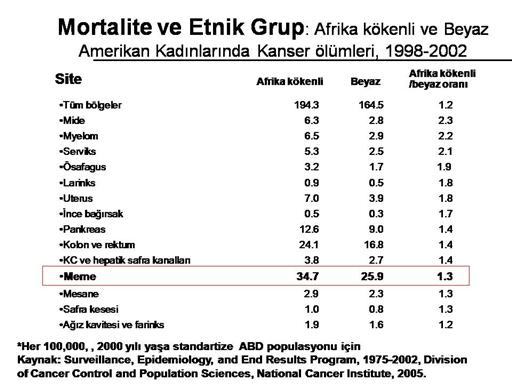| front |1 |2 |3 |4 |5 |6 |7 |8 |9 |10 |11 |12 |13 |14 |15 |16 |17 |18 |19 |20 |21 |22 |23 |24 |25 |26 |27 |28 |review |
 |
Death rates for female breast and colorectal cancers were approximately equal between whites and blacks around 1980. Subsequently, the gap in mortality widened over time, so that in 2000 the female breast and colorectal cancers were 32% and 30% higher in blacks than in whites, respectively. These trends occurred during a period of substantial improvement in early detection and treatment for breast and colorectal cancers. Historically, the use of mammography, which has contributed to reduction in deaths from breast cancer, has been lower in black women than in white women, although the rate has become comparable more recently.32 There is also some evidence that black women are less likely than white women to receive radiation therapy after breast-conserving surgery,33,34 a regimen that is known to improve survival.35 The diverging trends in mortality suggest that not all segments of the population have benefited equally from medical advances. Göç eden insanlarda saptanan, zaman içinde meme kanserine bağlı mortalite hızındaki değişiklik meme kanseri oluşumunda çevresel faktörlerin ve yaşam tarzının önemli faktörler olduğu görüşünü desteklemektedir. ABD’de ve Hawai’de yaşayan Japonlarda meme kanserine bağlı mortalitenin, Japonya’da yaşayan Japonlara göre; ABD’de doğan Japonlardaki mortalitenin de Japonya’da doğan ve ABD’de yaşayan Japonlara göre daha yüksek olduğu gösterilmiştir 1998-2002; ABD, Mortalite Yüzbin kadında; Genel: 26.4 Beyaz: 25.9 Siyah: 34.7 Asya kökenli: 12.7 Yerli: 13.8 Latin: 16.7 |